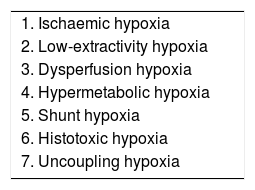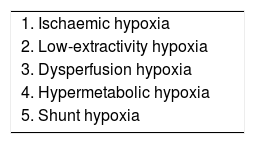Continuous monitoring of cerebral oxygenation and its application to the management of the severe neurological patient is a challenge for the management of patients with acute critical brain damage. Although several techniques have been described for monitoring brain, brain tissue oxygen monitoring provides relevant information about oxygen levels of brain tissue. However, the development of this technique has been associated with the need to answer not only some technical aspects of it as well as the meaning of the changes of the cerebral oxygenation in the neurocritical patient. The consensus document responds to various questions related to the monitoring of cerebral oxygenation by means of a cerebral oxygen tissue pressure sensor. For this purpose, a list of questions was prepared and a reviewed of the medical literature was made. The quality of the evidence and the degree of recommendation was evaluated using the GRADE methodology.
La monitorización continua de la oxigenación cerebral y su aplicación al manejo del paciente neurológico grave es uno de los grandes retos actuales de la medicina crítica. Aunque han sido descritas diversas técnicas para la monitorización de la oxigenación cerebral, la monitorización tisular cerebral de oxígeno proporciona una relevante información sobre los niveles de oxígeno a nivel del tejido cerebral. Su desarrollo se ha asociado a la necesidad de responder no solamente aspectos técnicos sobre la misma, sino también al significado de la alteración de los valores de la oxigenación cerebral en el paciente neurocrítico. El documento de consenso da respuesta a diversas cuestiones relativas a la monitorización de la oxigenación cerebral mediante sensor de presión tisular cerebral de oxígeno. Para ello se elaboró un panel de preguntas y se realizó una revisión de la literatura médica, y evaluando la calidad de la evidencia y el nivel de recomendación mediante la metodología GRADE.
Article

If it is the first time you have accessed you can obtain your credentials by contacting Elsevier Spain in suscripciones@elsevier.com or by calling our Customer Service at902 88 87 40 if you are calling from Spain or at +34 932 418 800 (from 9 to 18h., GMT + 1) if you are calling outside of Spain.
If you already have your login data, please click here .
If you have forgotten your password you can you can recover it by clicking here and selecting the option ¿I have forgotten my password¿.









